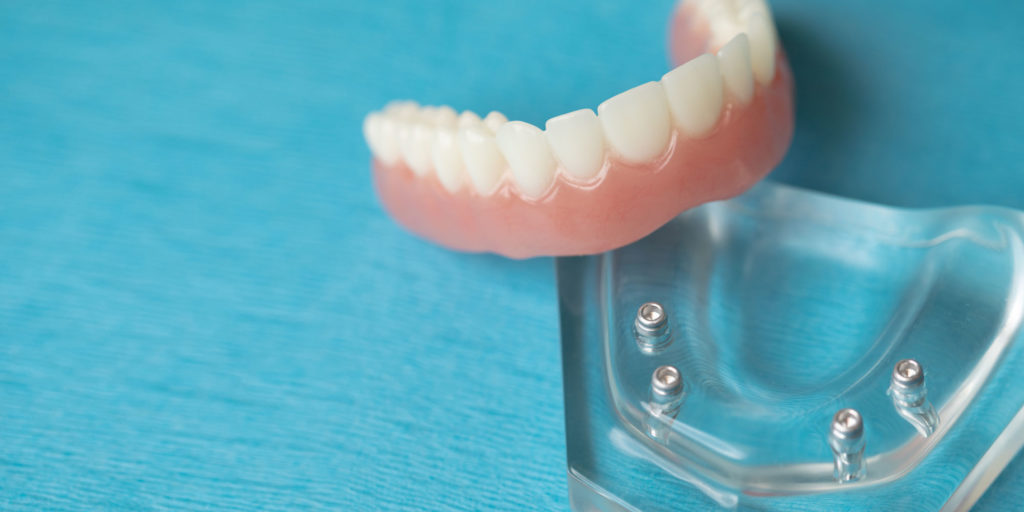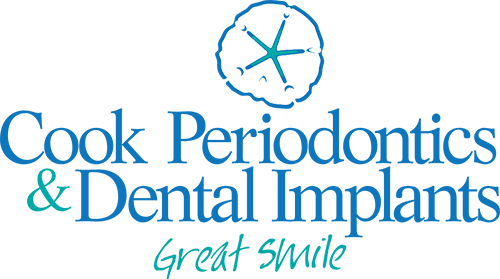
Comparing Dental Implants to a Traditional Dental Bridge:
Partial bridges were a once-popular choice for replacing multiple missing teeth. Although they usually did the job, they also came with risk of complications.
A couple things to consider about traditional dental bridges:
- Tough on existing teeth. Traditional dental bridges are constructed in ways that can wear down and cause damage to the supporting teeth. Studies show they can even cause patients to experience more missing teeth.
- Jaw bone deterioration. Traditional dental bridges do not support bone stimulation. In fact, they can do quite the opposite, causing weakness and deterioration in the jaw bone. This can lead to sagging facial muscles, which make it difficult for patients to eat and speak normally due to repeated slippage and movement.
Dental Implants Offer Solutions
Dental Implants may provide a better solution for patients with missing teeth. Dental implants are made of titanium, which the body accepts seamlessly. This means the dental implants actually mimic real tooth roots and will fully integrate with the jaw bone for a solid, long-term solution that supports facial structure. No slippage or movement and no concerns about speaking and eating properly.
There’s more than one option to consider when using dental implants to replace many missing teeth.
Implants at the site of every lost tooth. Dr. Deana is likely to consider this option first because multiple implants placed exactly where real teeth once were serve and act as real teeth. However, this option isn’t for all patients, particularly those who have lost too much bone. Dental implants depend on a good amount of bone to function. But bone grafting may offer a solution.
Implant-supported bridges. Similar to traditional bridges, in which artificial teeth are attached to two of the patient’s own natural teeth/abutments, the dental implants are the anchor teeth. This method also protects the remaining teeth and bone from damage. Here’s how it works:
1. The dental implants are fitted with a “flipper”, which is a temporary placement that sits between the new implants for about four to six months to allow them to fuse with the jaw bone.
2. A permanent prosthetic is then attached to the dental implants.
Taking Care of Dental Implants
Just like natural teeth, dental implants require daily flossing and brushing, and regular dental checkups to keep them healthy and functional. With good oral hygiene, your dental implants should last forever.
We are accepting new patients in both our Wilmington and Leland offices!
Dr. Deana Cook, located in Wilmington and Leland, NC, is an experienced periodontist who serves patients from Castle Hayne, Porters Neck, Odgen, Leland, Wrightsville Beach, Carolina Beach, Southport, and Hampstead. Dr. Cook, along with our entire team, is looking forward to welcoming you to our office and encourage you to schedule your appointment today!
Wilmington Office
7028 Wrightsville Avenue
Wilmington, NC 28403
Phone Number: (910) 256-8486
Monday: CLOSED
Tuesday: 8:00am – 3:00pm
Wednesday: 8:00am – 3:00pm
Thursday: CLOSED
Leland Office
1217 Magnolia Village Way
Leland, NC 28451
Current Patients: (910) 256-8486
Monday: 8:00am – 3:00pm
Tuesday: CLOSED
Wednesday: CLOSED
Thursday: 8:00am – 3:00pm


